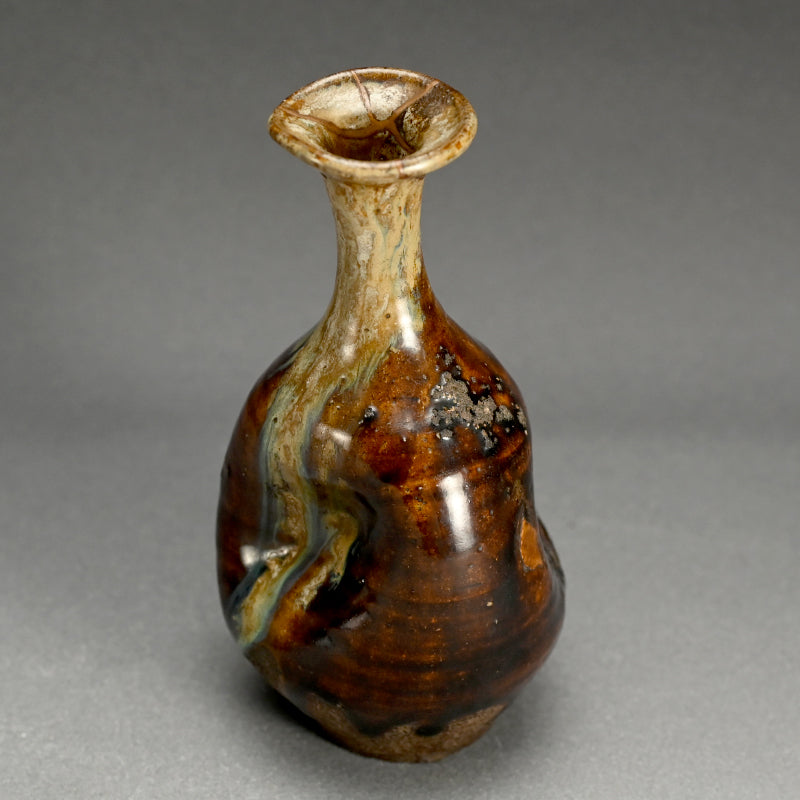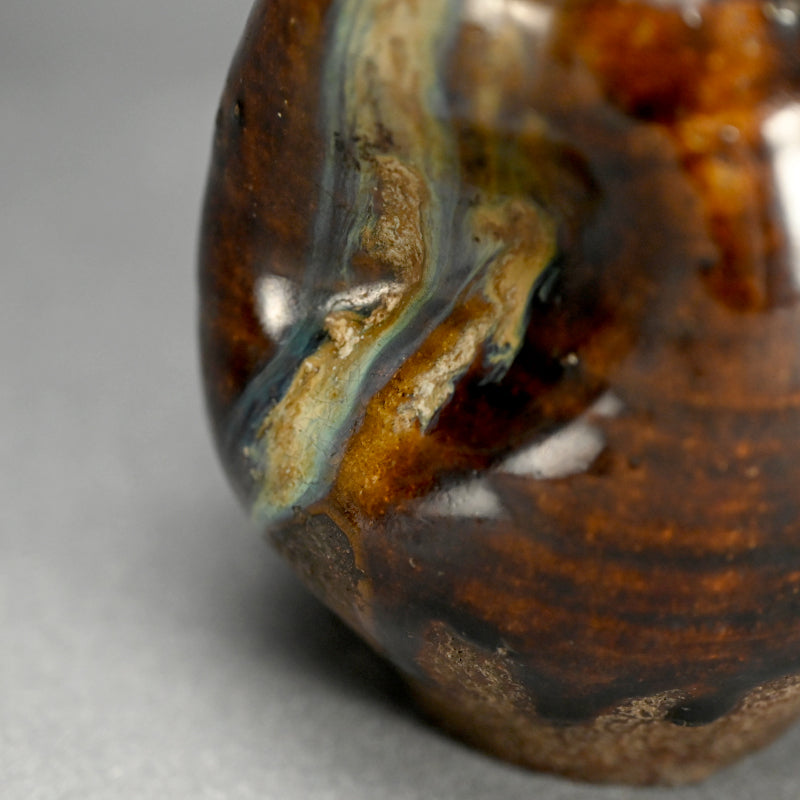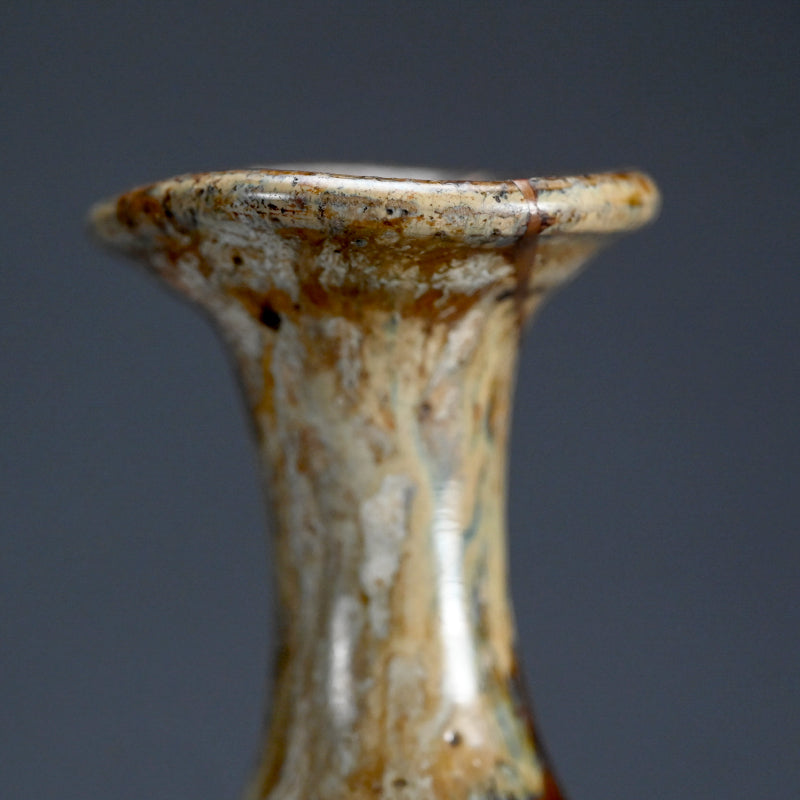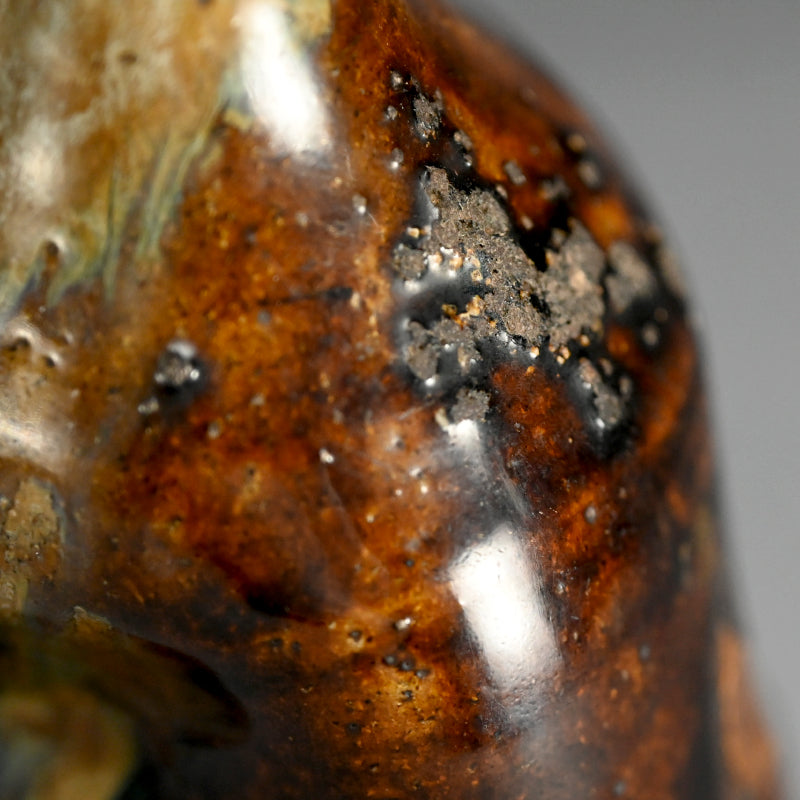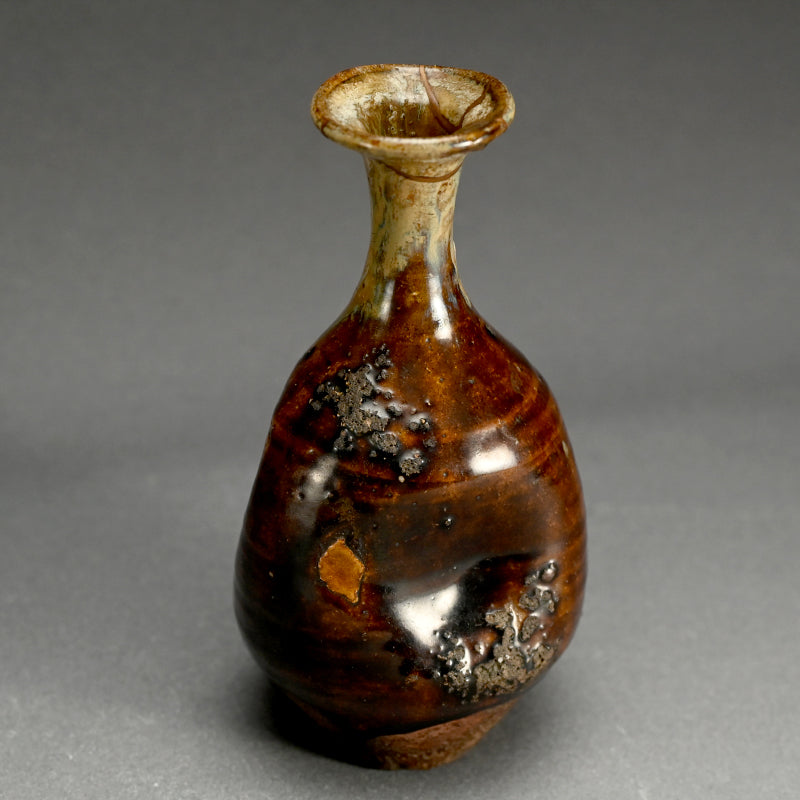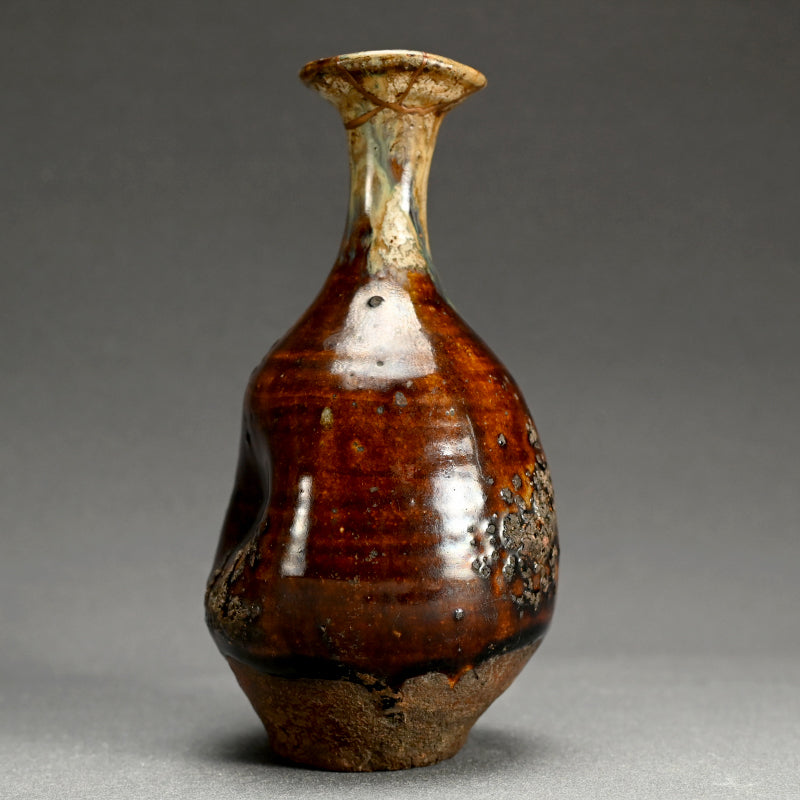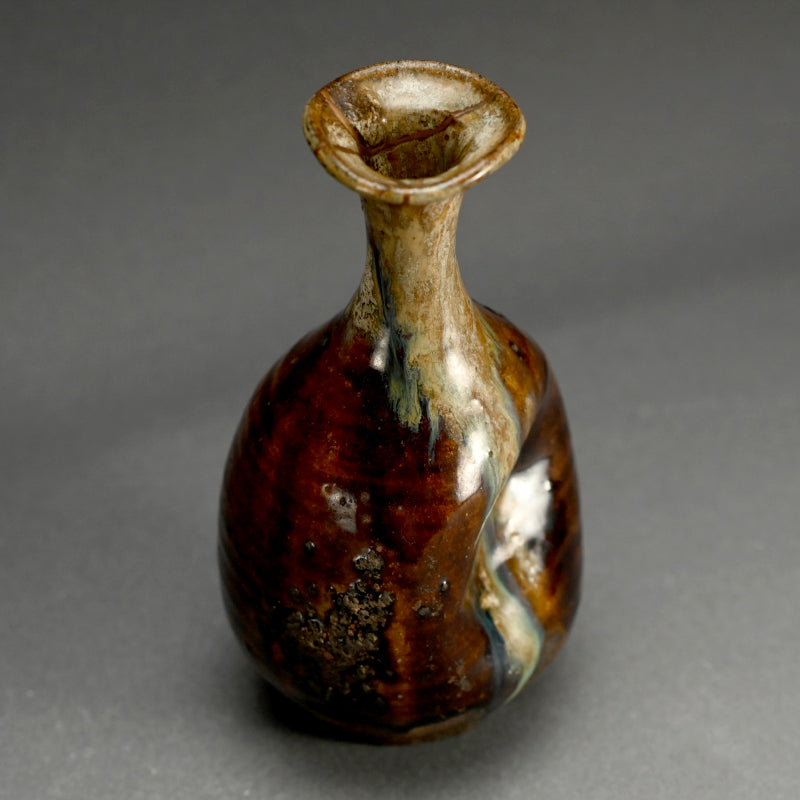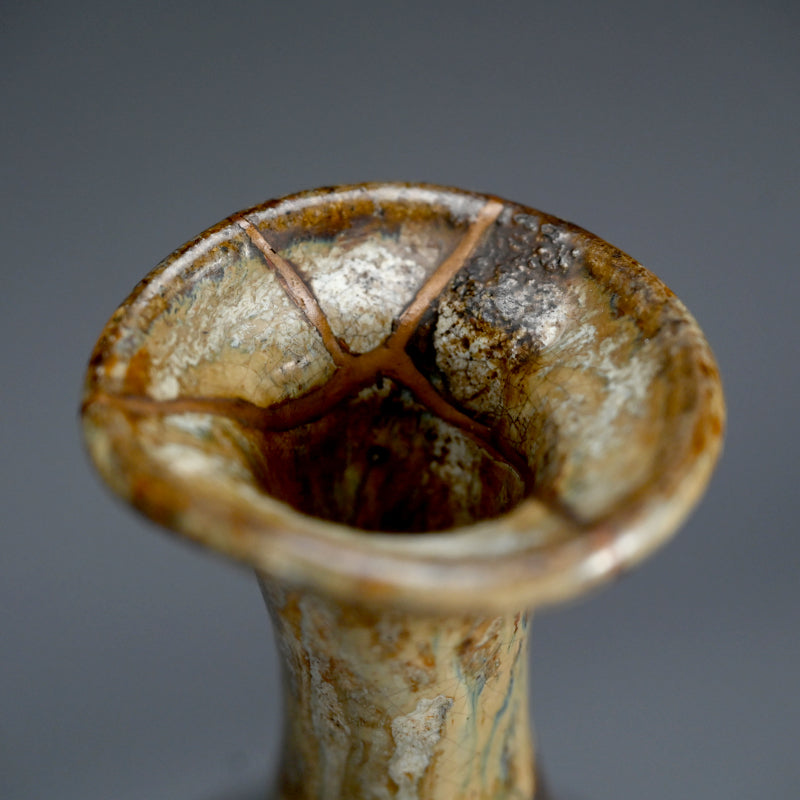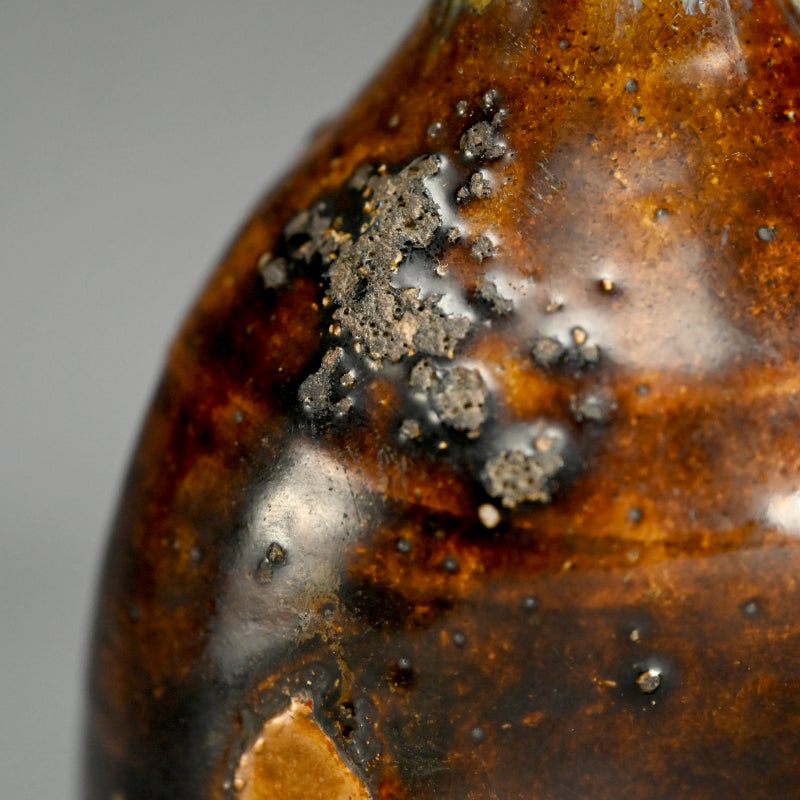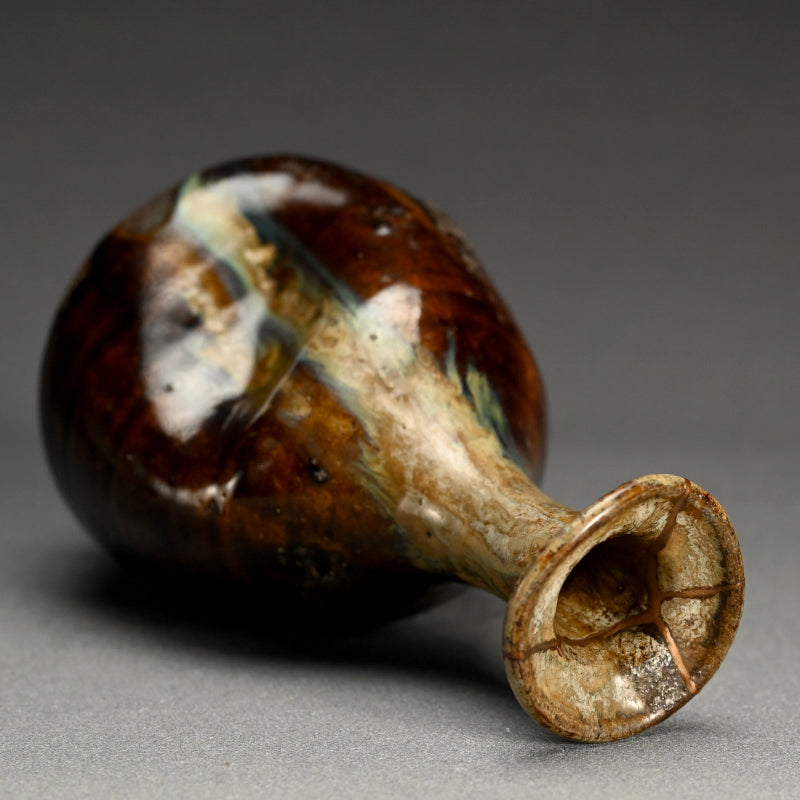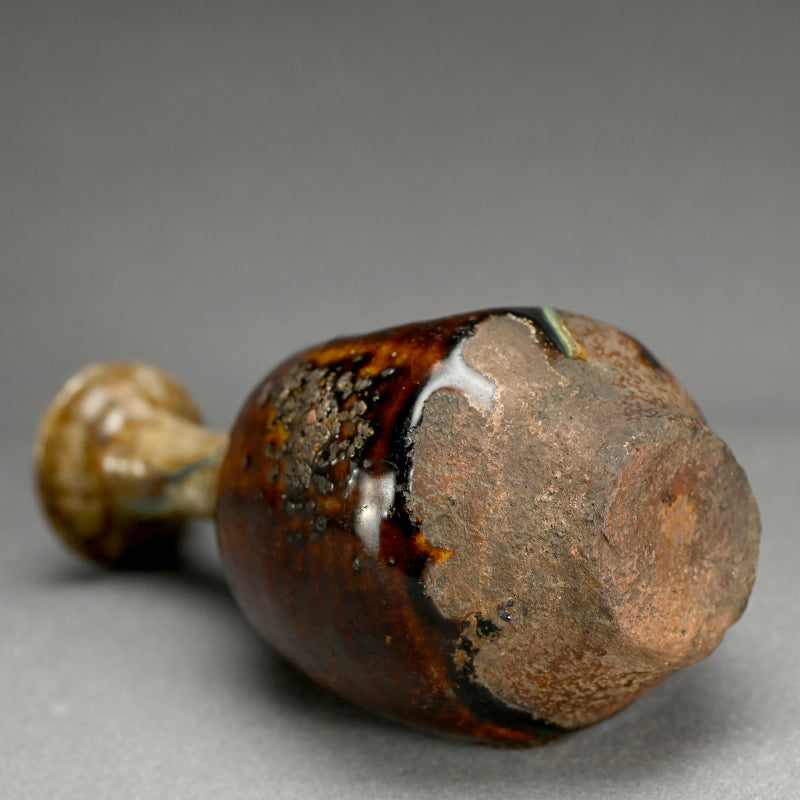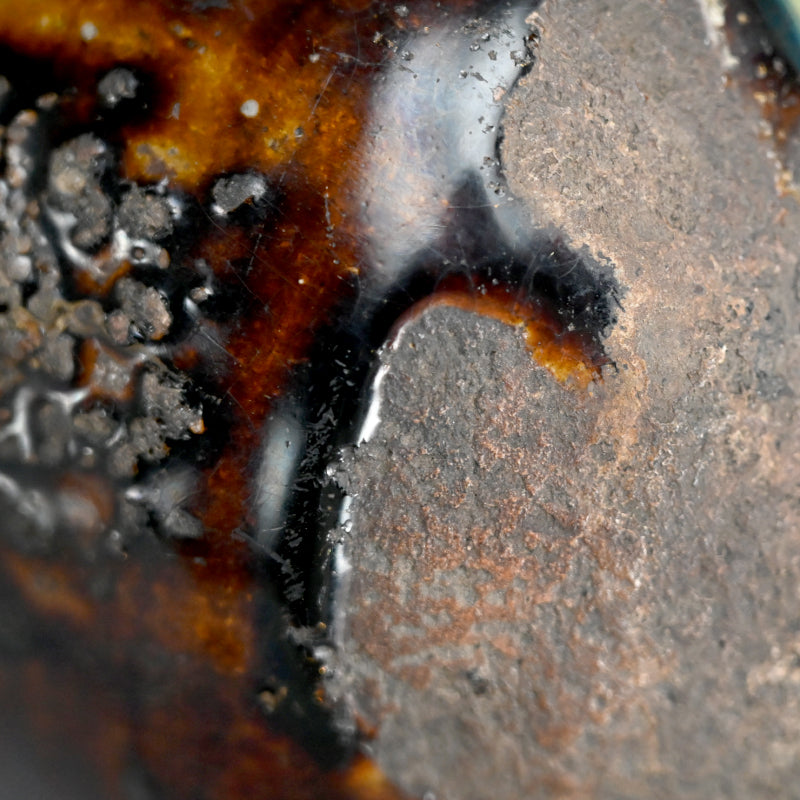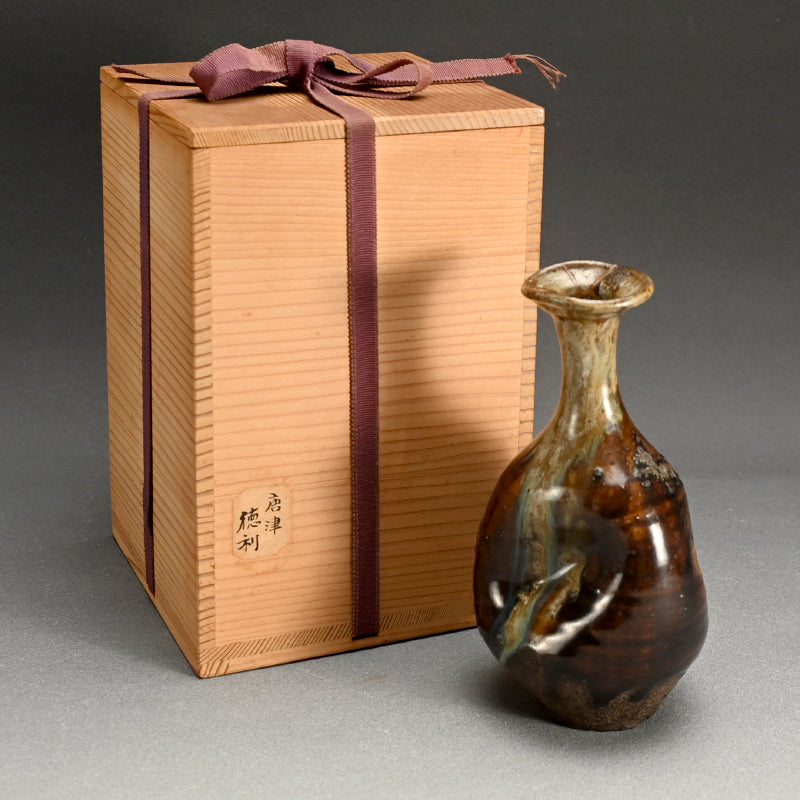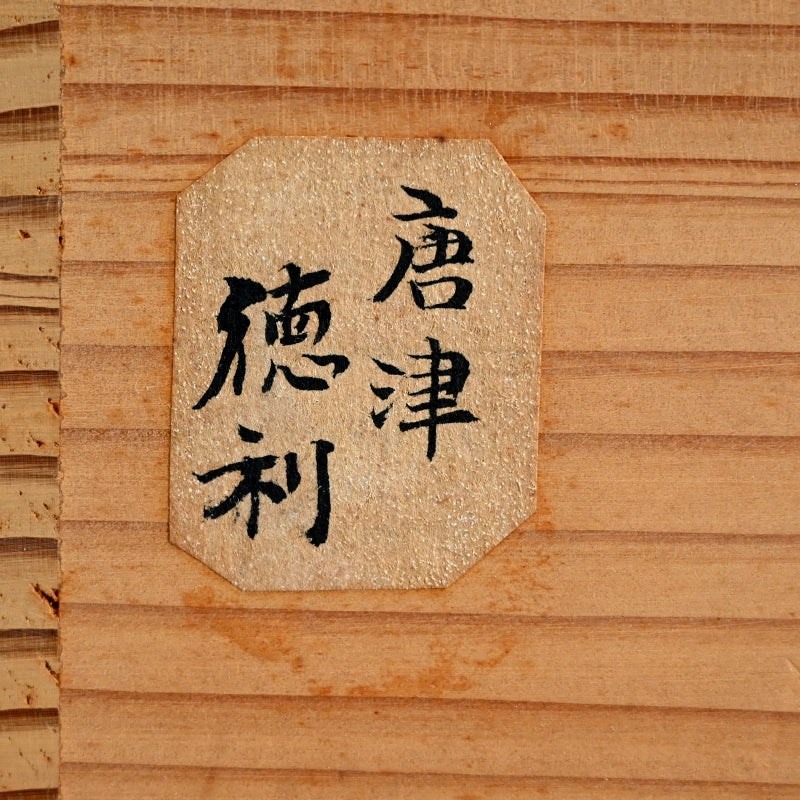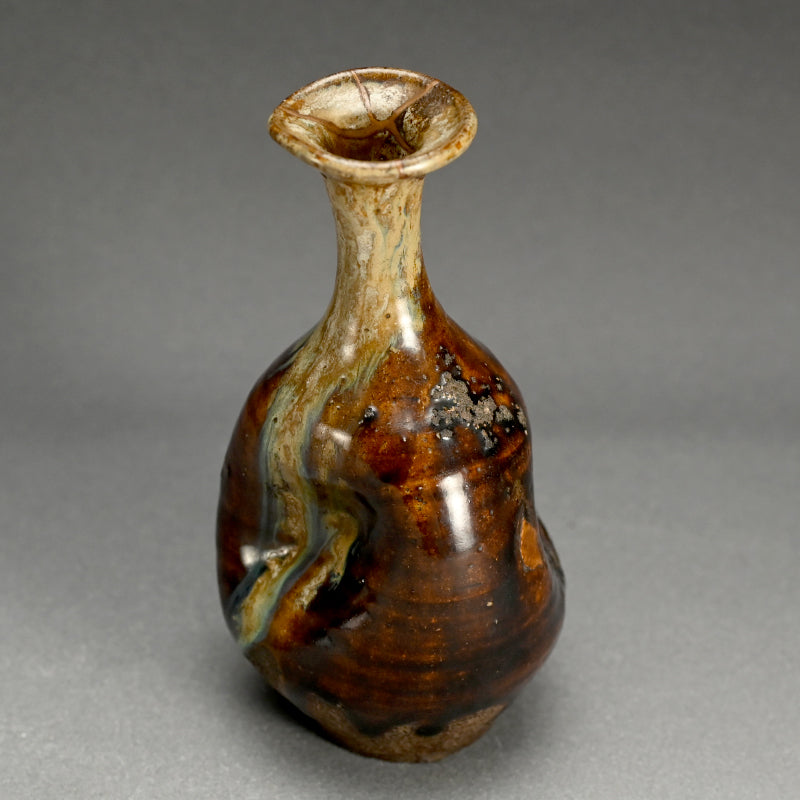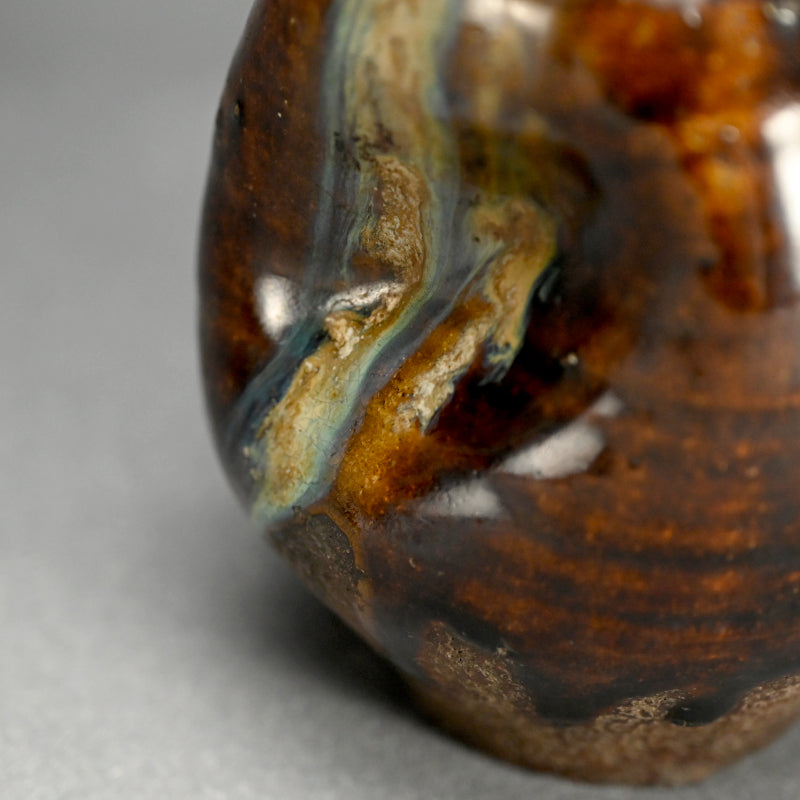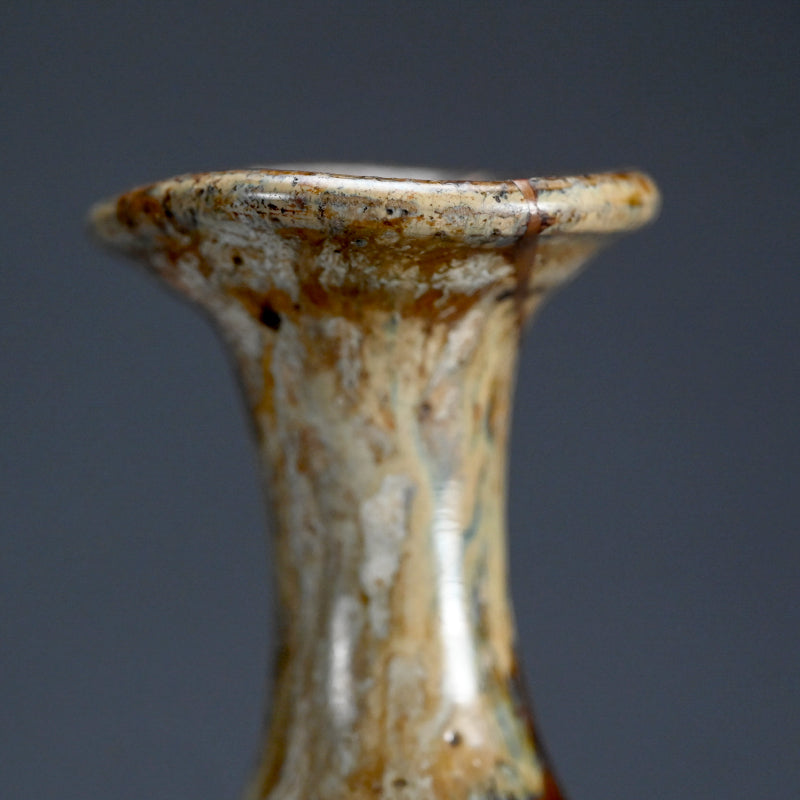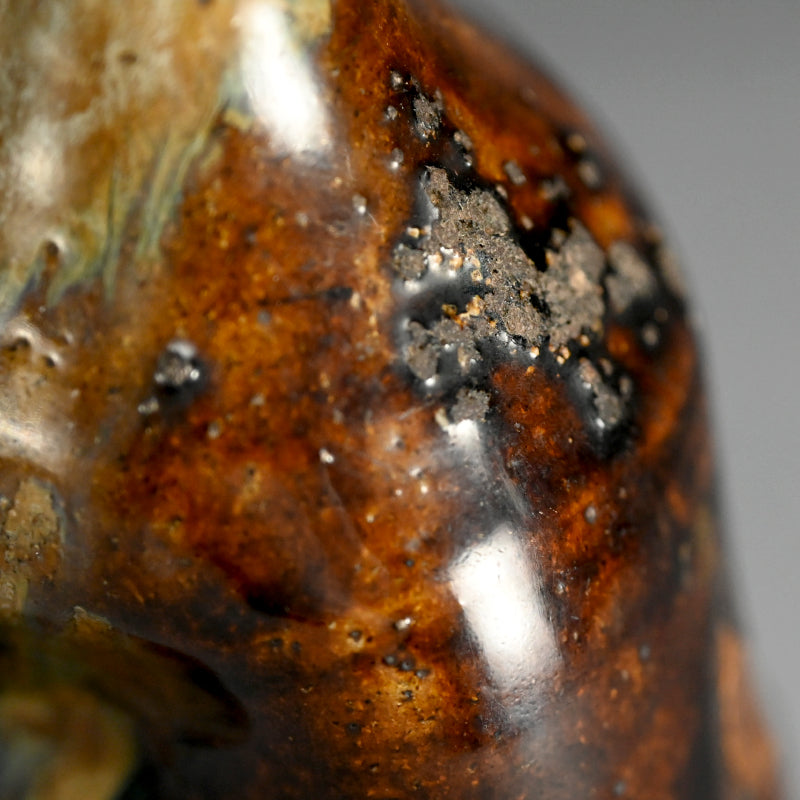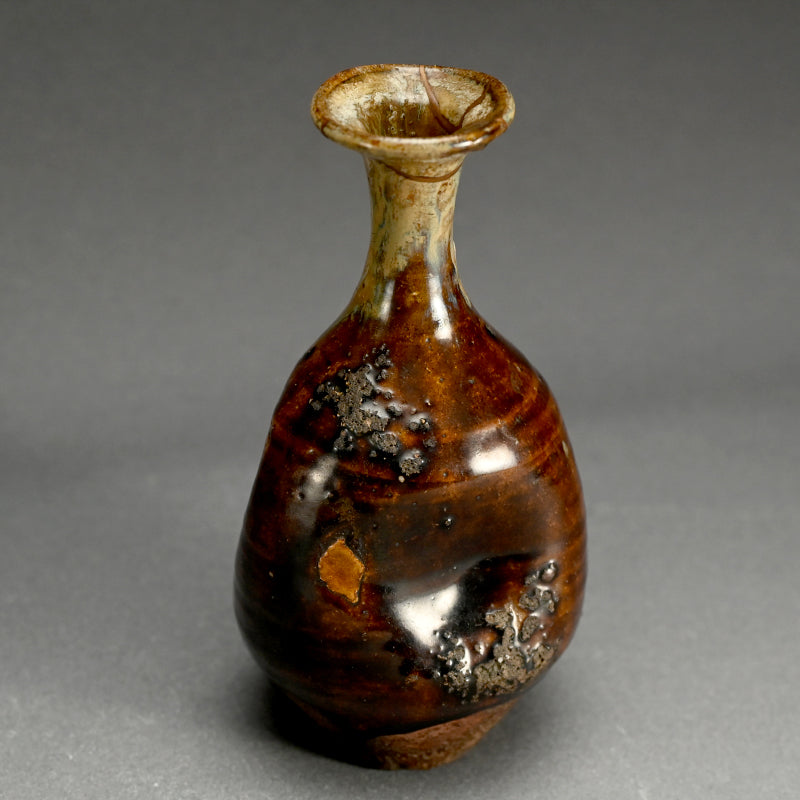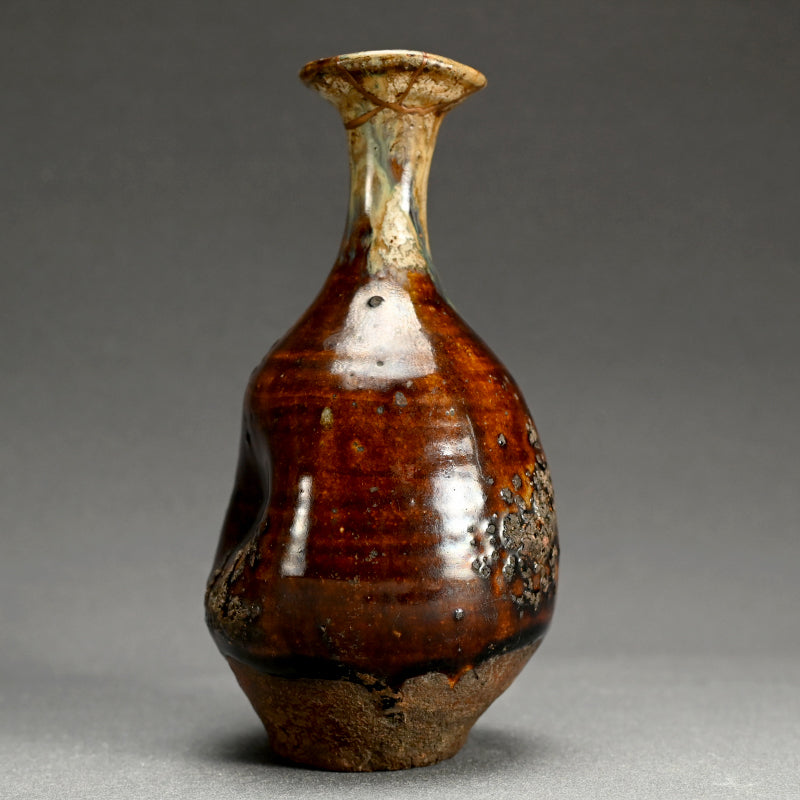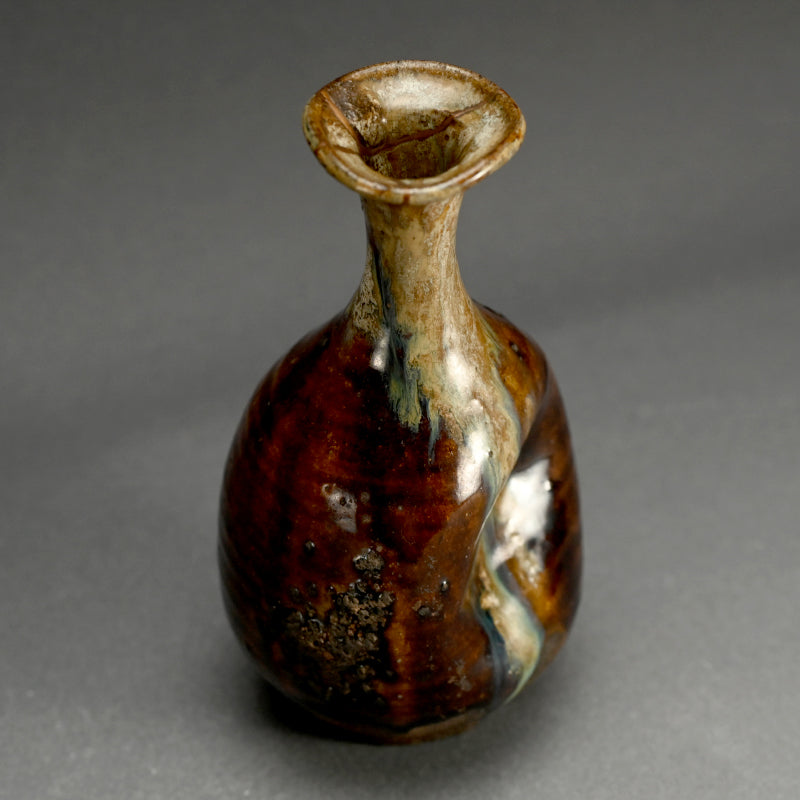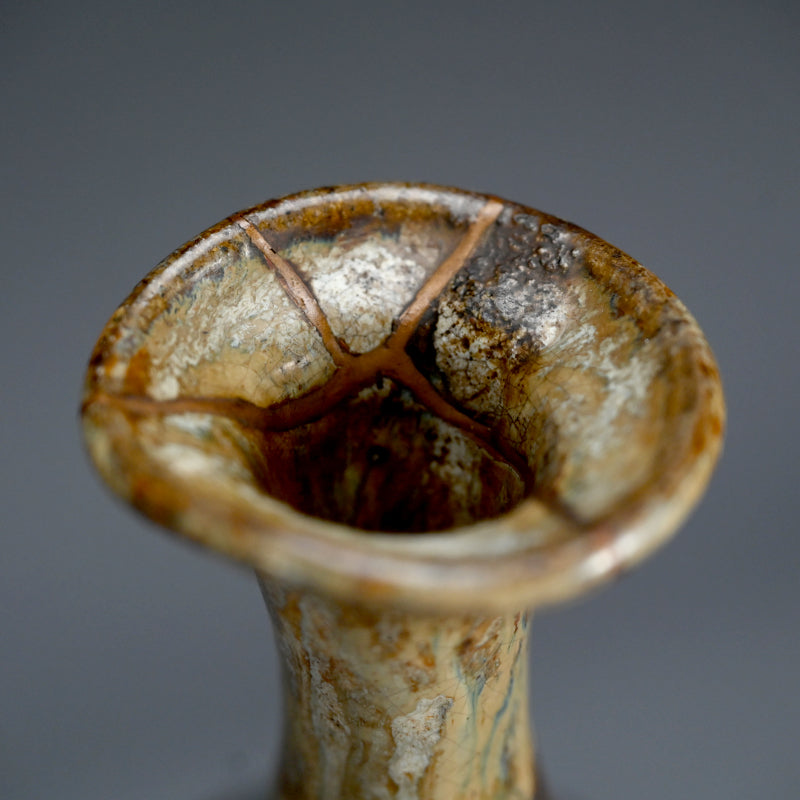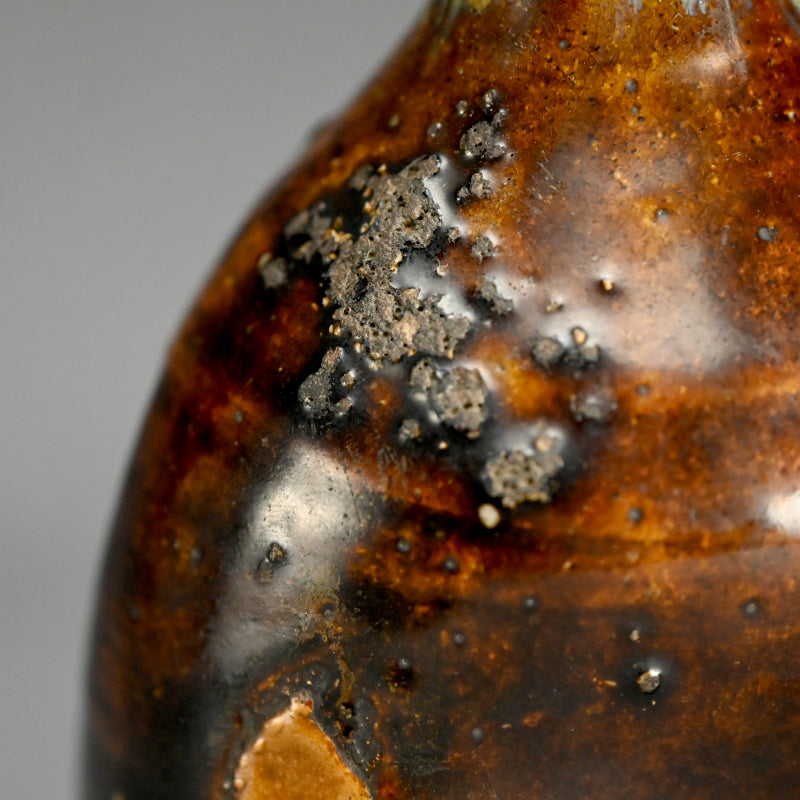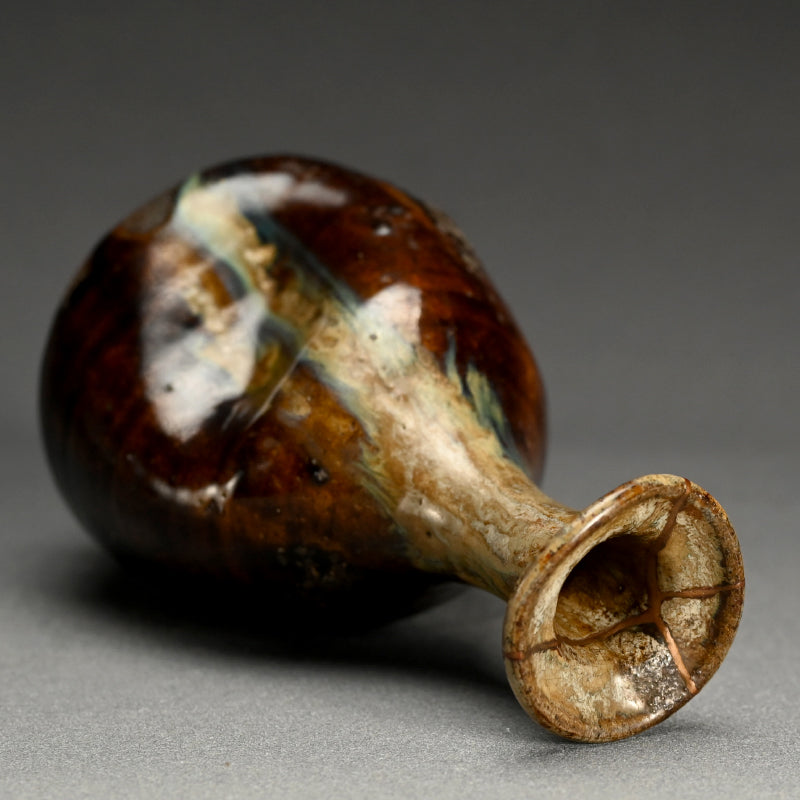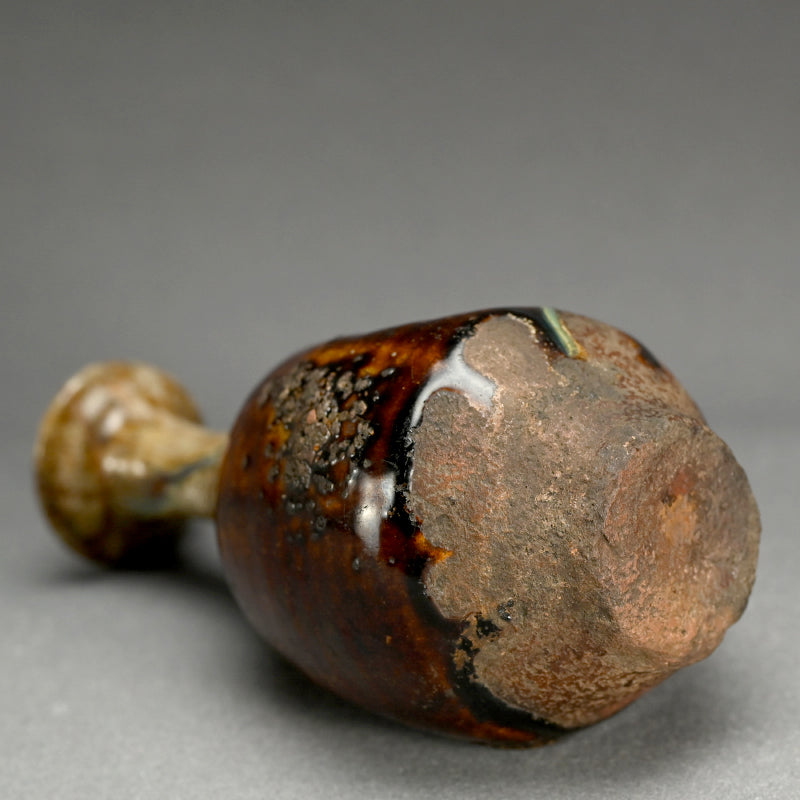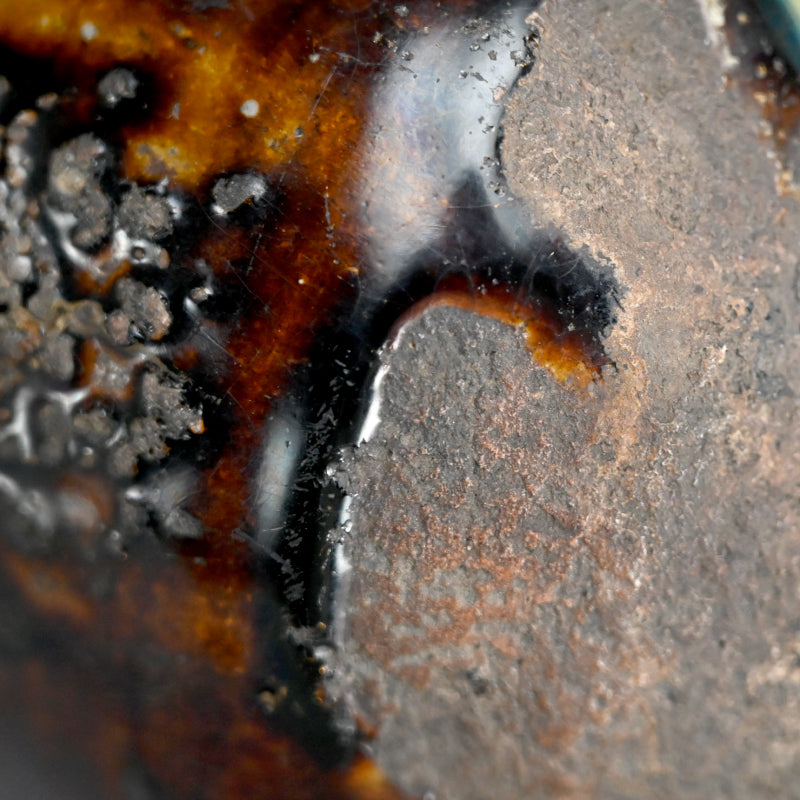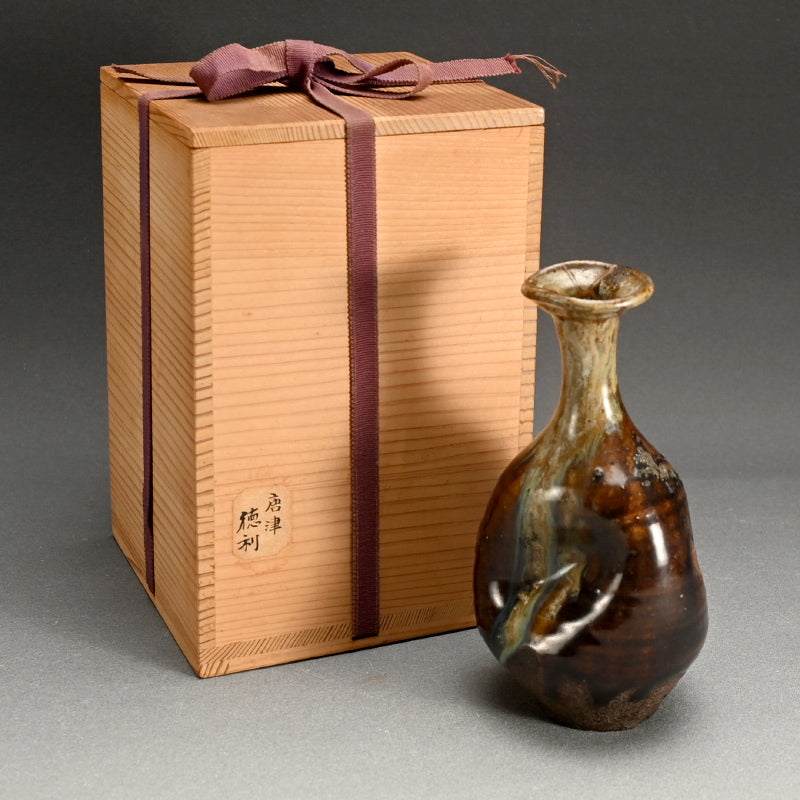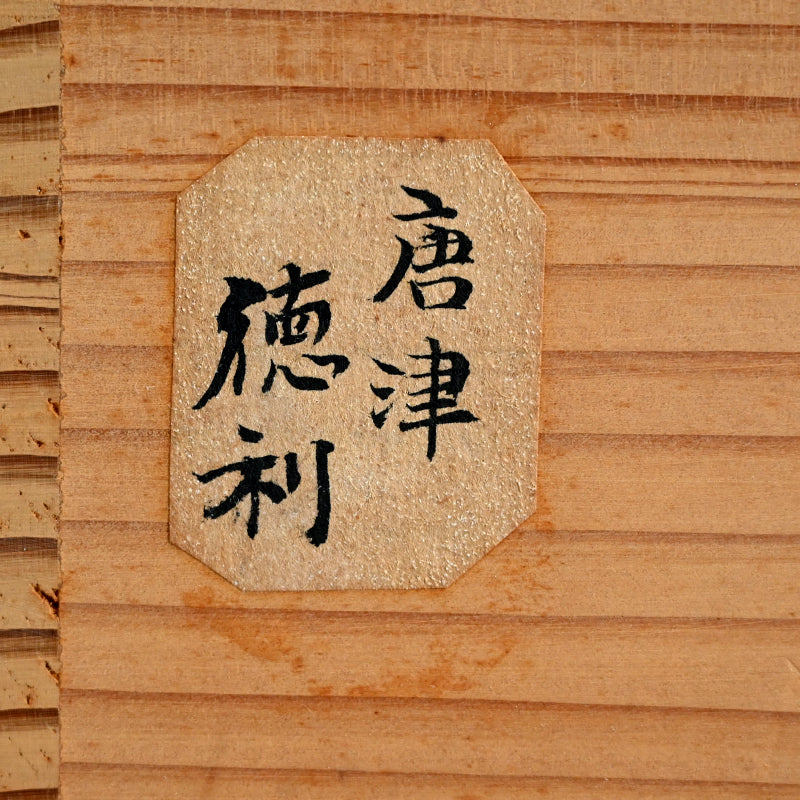1
/
of
14
17th c. Japanese Chossen Karatsu Tokkuri w/ Gold Repairs ー唐津徳利
17th c. Japanese Chossen Karatsu Tokkuri w/ Gold Repairs ー唐津徳利
Item Code: K656
Regular price
¥217,300 JPY
Regular price
Sale price
¥217,300 JPY
Unit price
/
per
Tax included.
Couldn't load pickup availability
A sake flask dating from the Momoyama to early Edo period from the kilns of Karatsu on the southern island of Kyushu with gold repairs about the flaring rim and one to the side. The bottle has been dimpled to allow for ease of handling, and through one of the concave sides rushes a streak of blue and white like a misty waterfall over the russet brown glaze. The raw clay of the base is fired to a stone-like quality. It is roughly 11 cm (4-1/4 inches) diameter, 21 cm (8-1/2 inches) tall.
Karatsu pottery (Karatsu-yaki) is a celebrated Japanese ceramic tradition that originated in the late 16th century in Karatsu, Saga Prefecture, on the island of Kyushu, heavily influenced by Korean pottery techniques brought over by artisans during the Azuchi-Momoyama period (1573–1603). Karatsu pottery is known for its understated, rustic aesthetic, often characterized by natural glazes, earthy tones, and minimal decoration. Its designs align with the Japanese concept of wabi-sabi, emphasizing simplicity, imperfection, and the beauty of natural forms. Popular styles include E-garatsu (painted Karatsu), Madara-garatsu (spotted Karatsu), and Chōsen-garatsu (Korean-style Karatsu). Initially, Karatsu ware was produced to serve the practical needs of daily life, including tableware, and storage jars. However, with the rise of the Japanese tea ceremony, it became highly sought after by tea masters for its organic beauty and suitability for the ritual.
Karatsu pottery (Karatsu-yaki) is a celebrated Japanese ceramic tradition that originated in the late 16th century in Karatsu, Saga Prefecture, on the island of Kyushu, heavily influenced by Korean pottery techniques brought over by artisans during the Azuchi-Momoyama period (1573–1603). Karatsu pottery is known for its understated, rustic aesthetic, often characterized by natural glazes, earthy tones, and minimal decoration. Its designs align with the Japanese concept of wabi-sabi, emphasizing simplicity, imperfection, and the beauty of natural forms. Popular styles include E-garatsu (painted Karatsu), Madara-garatsu (spotted Karatsu), and Chōsen-garatsu (Korean-style Karatsu). Initially, Karatsu ware was produced to serve the practical needs of daily life, including tableware, and storage jars. However, with the rise of the Japanese tea ceremony, it became highly sought after by tea masters for its organic beauty and suitability for the ritual.
Share
